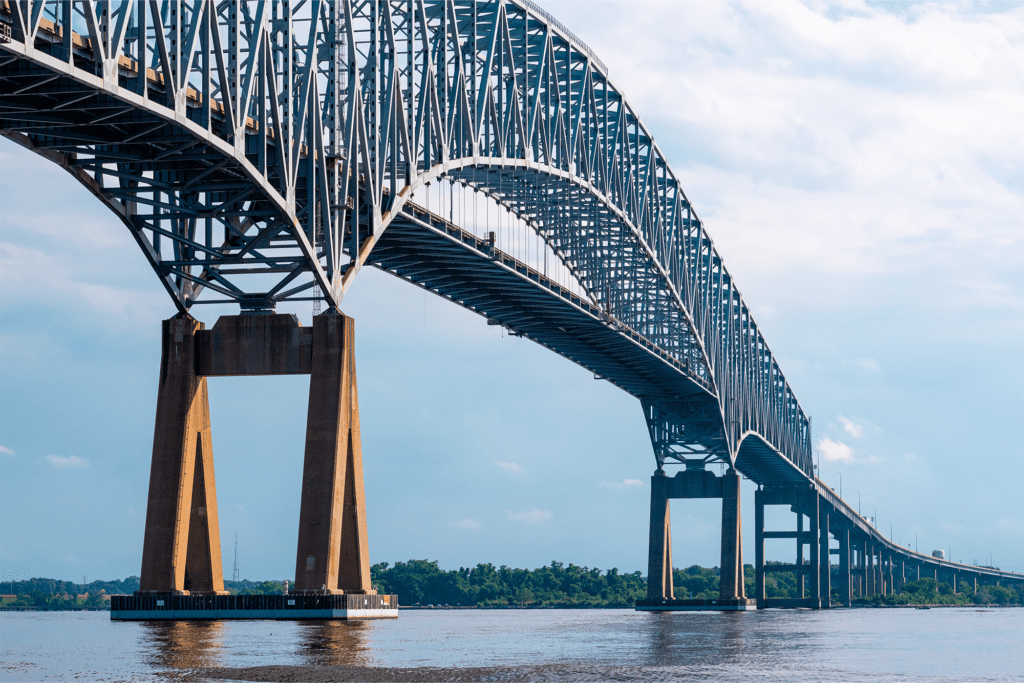Baltimore Bridge Collapse Could Lead to Historic Marine Losses

On Tuesday, March 26, 2024, a large container ship traveling through the Port of Baltimore in Maryland collided with a concrete column supporting the Francis Scott Key Bridge, ultimately causing the nearly 50-year-old structure to completely collapse and shutting down one of the largest and busiest harbors in the United States. The incident has contributed to significant property damage, major shipping disruptions, widespread supply chain complications and several fatalities, with many insurance experts projecting it to become the biggest marine loss the industry has ever seen.
Incident Details
Around 1:30 a.m. on Tuesday morning, a Singapore-flagged ship named the Dali was moving through the Port of Baltimore when it experienced a power outage and lost visibility. Shortly afterward, the crew members of the 984-foot vessel issued a mayday to local authorities, but it was too late; the Dali connected with a concrete column holding up the Francis Scott Key Bridge at a speed of 9 mph, causing the section of the bridge directly above the column to crumble. The entire bridge followed suit within seconds, descending into the Patapsco River below.
The U.S. Coast Guard quickly responded to the bridge collapse by closing the Port of Baltimore and commencing search-and-rescue efforts for individuals affected by the incident. Although all of the Dali’s crew members survived, several construction workers who were on the bridge during the collapse fell into the harbor’s frigid water and were declared missing by Tuesday evening. Two of these individuals’ bodies were recovered in the following days, while the remaining four are presumed dead. In addition to the large-scale property damage and tragic loss of life caused by the incident, the port’s closure has halted various shipping operations and contributed to worldwide supply chain issues. It’s currently unclear when the harbor will reopen.
Insurance Implications
While insurance calculations regarding the bridge collapse are still underway, the incident is expected to cause record-setting marine losses. According to projections from multinational universal bank Barclays, claims regarding property damage to the bridge alone could cost up to $1.2 billion. What’s more, industry experts from credit rating agency AM Best, financial services firm Morningstar and global insurance market Lloyd’s of London anticipate that the incident will likely lead to additional multimillion-dollar claims due to liability concerns, wrongful death lawsuits and business interruption issues.
Total loss estimates for the incident vary. Modest projections show the collapse costing between $2 billion and $4 billion, whereas some predict the incident could surpass $5 billion. In any case, industry experts expect the loss to remain manageable for the global insurance sector, as associated claims should be distributed across a diverse pool of insurers and reinsurers. Contact us for more industry updates.
The content of this News Brief is of general interest and is not intended to apply to specific circumstances. It should not be regarded as legal advice and not be relied upon as such. In relation to any particular problem which they may have, readers are advised to seek specific advice. © 2024 Zywave, Inc. All rights reserved.



